
Home Introductory Comments Album Cover & Recording Info Audio Clips Conclusions
Sinatra’s Swingin’ Session!!!
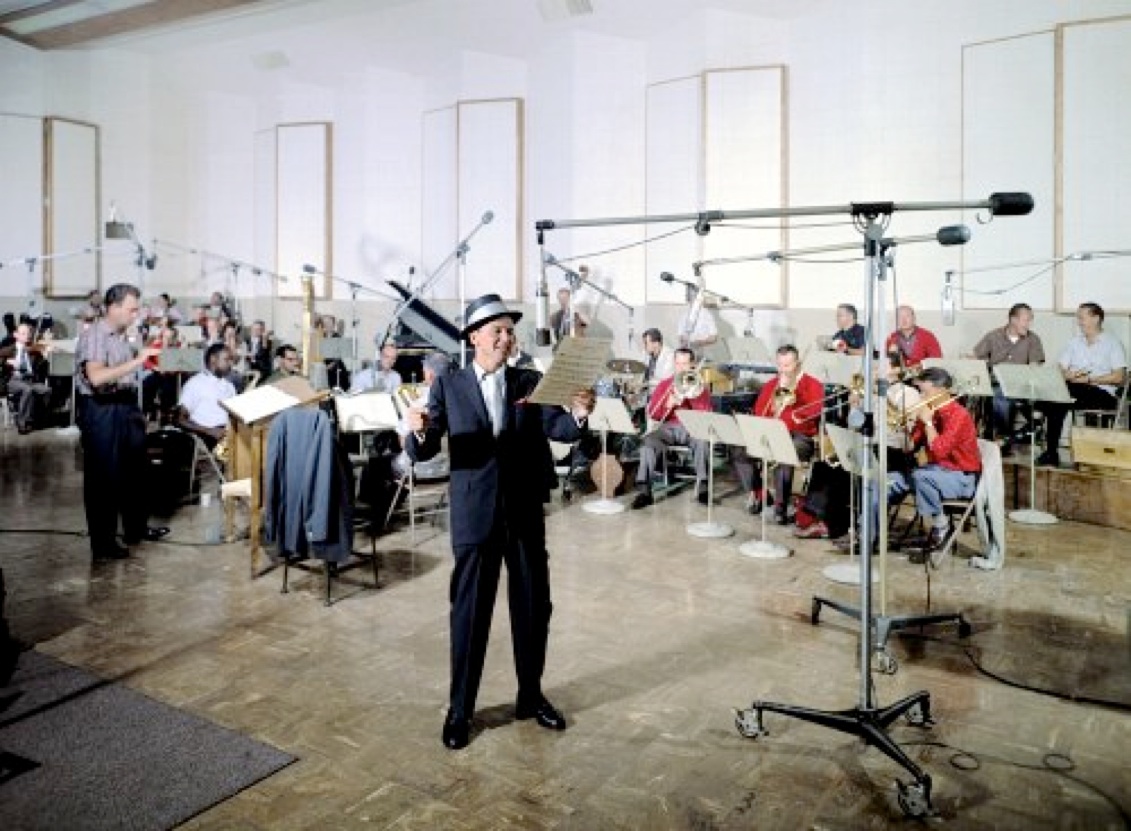

I used to know an amazing drummer (now deceased) named Dusty Neely
who performed with the Dorsey Brothers, and I remember one time asking
him what his favorite instrument was and why, and his reply was: “The piano, because it’s so visual and laid out before your eyes, with lows down there and highs up there and all the sharps and flats clearly visible.” This album cover photo is kind of the same way in terms of stereo sound: The left track is over there on the left (green arrows), and right track is over there on the right (red arrows), and Frank’s there in the middle. I love it!












Let’s start with the fantastic album cover,
August 23, 1960 (Red Sweater Day in Los Angeles)
Five saxes, with bass clarinet on stand-by, all gathered around a single, bi-directional RCA 44 ribbon mic
Harp, with mic not visible
Celli, sitting in the rear, apparently with their own mic, although it’s a bit unclear.
Upper strings, apparently with two mics, although it’s a bit unclear.
Above: Sinatra, hat, mptv logo, and RCA 44 mic visible in piano lid off to the left side.

Mallet percussion, also on an RCA 44.
Trombones, on a U47/48.
Alvin Stoller, his drums, and an Altec 21B omnidirectional “Coke bottle” mic.
Red Mitchell on bass; mic not visible.
Al Viola (behind Frank) on guitar; mic not visible.
Bill Miller’s piano, with
RCA 44 (unseen here, visible in another photo below).
Trumpet section captured on what appears to be an Electro-Voice V-series mic, although I suspect it is actually an RCA 44. (Hard to tell with low-rez photo reproduction.) Mic cropped out of album cover, but visible below.

Mr. Sinatra, this time not using Capitol’s trademark U47 (or 48), but instead using a Telefunken/AKG ELA 250 (or 251). (See inset, also. Mic clearly “staged” for color photo.)
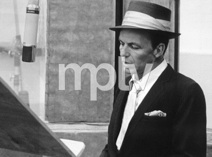
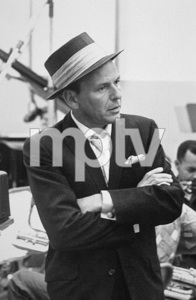
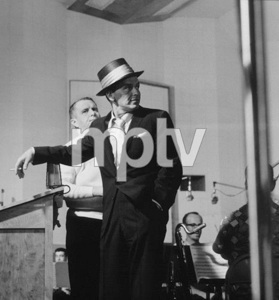
Above: Sinatra, hat, mptv logo, and what appear to be two RCA 44 mics for the string section, visible above the head of an unsuspecting, bespectacled sax player off to the right.
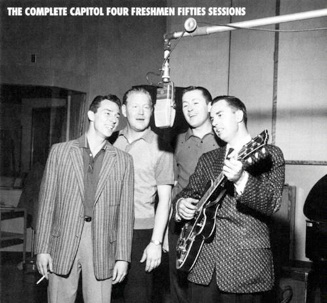
While there is a degree of stagecraft used in that Sinatra album cover, it’s pretty mild compared to this Four Freshmen photo!
Nelson Riddle


Former artist “Sting” (left) performing his famous “I Want My MPTV” bit with Dire Straits, 1986.
Sinatra photos by Sid Avery, mostly available from MPTVimages.com
Just to dispel pesky rumors: There is no alternate cover photo used on some issues of this album, but there was some poor touch-up work done by EMI in Britain that altered the appearance of a couple of players in the orchestra. This all came to be when EMI needed cover art for the CD in their 1998 boxed set. Instead of going back to the original photo or even going back to an original LP jacket, they used the cover art for the 1987 “Sinatra’s Swingin’ Session!!! and more” CD, but removed the “and more,” problem being: The “and more” partially covered the faces of two players in the orchestra, so when those two words were “airbrushed out,” the faces had to be “recreated,” assumedly using Photoshop or a similar touch-up program, and it was done quite poorly.
Upper right: Original LP cover
Center right: 1987 CD cover, with “and more” added
Bottom right: 1998 UK box set
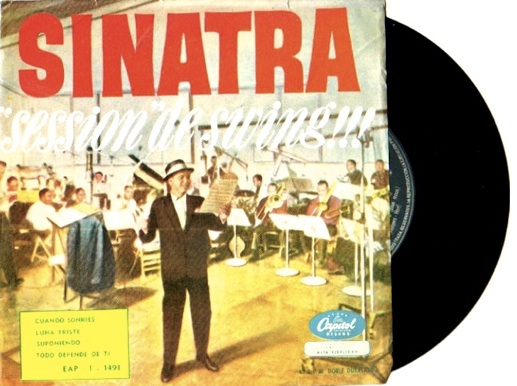
Above:
Argentinian EP release.

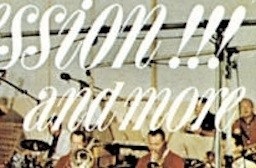
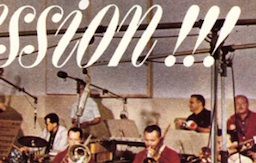
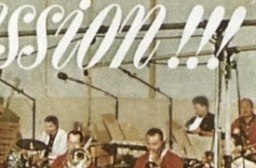
This is the second Sinatra album recorded from the new, enlarged, upgraded Studio A stereo control room at Capitol, and the first that has actual photographs from the session.
Please continue to page 3, audio clips.
Capitol Studios: Now Renovated for Stereo!
Stereo Finally Moves Downstairs and Takes Over
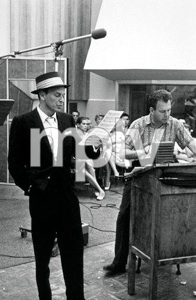
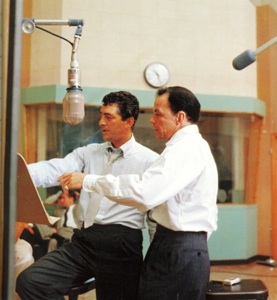
October 1958:
Nearing the end for the original mono booth
August 1960:
2nd Sinatra album to use the new, enlarged stereo booth
Original mono booth, completed in 1956.
(Stereo recording initially accomplished upstairs, separate from actual studio.)
New stereo booth, completed late in 1959. 12-input stereo/mono mixer, up to four Ampex tape machines, switchable 1-, 2-, and 3-channel monitoring.
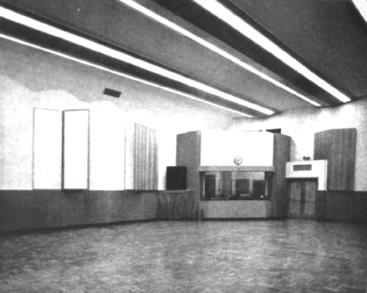
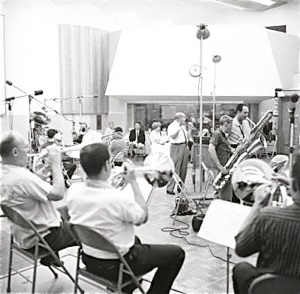
(Before) (After)


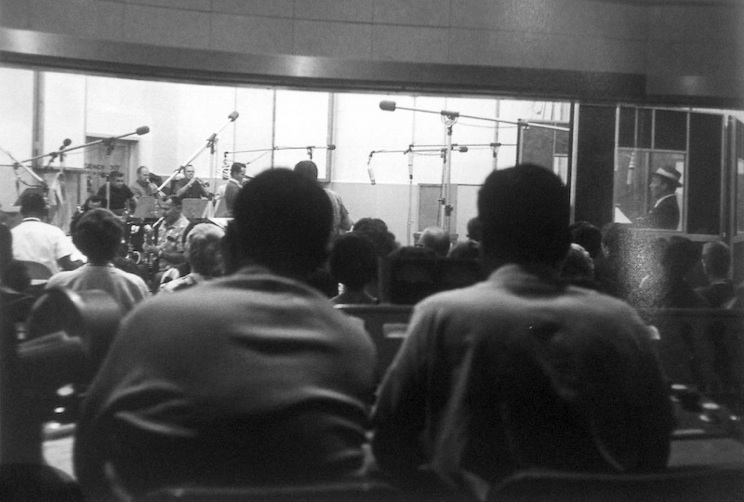
The shot at right shows Sinatra’s actual, non-”staged” location during the recording sessions, as seen from inside the control room. Note the large audience in the studio itself.
